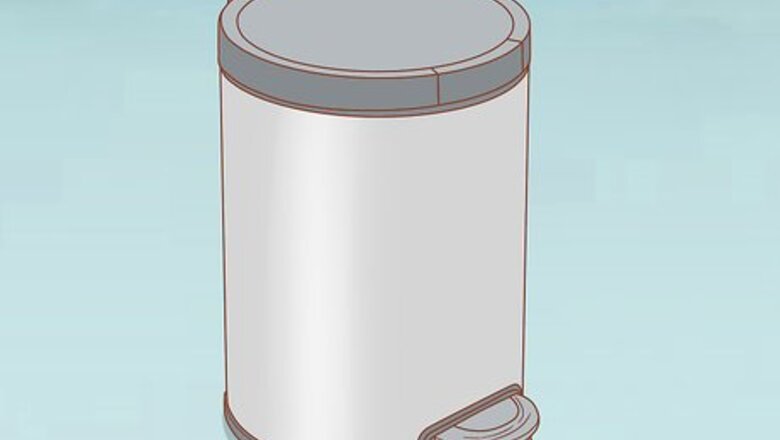
views
Preventing Sickness and Injuries

Shut your garbage can with a lid. If you plan on letting your guinea pig explore a room with a garbage can, like the kitchen or an office, use a trash can that comes with a fastened lid. The smell of food might cause your guinea pig to chew on the can, or try to knock it over. You can also store your garbage can behind a closed door in a cupboard or pantry.
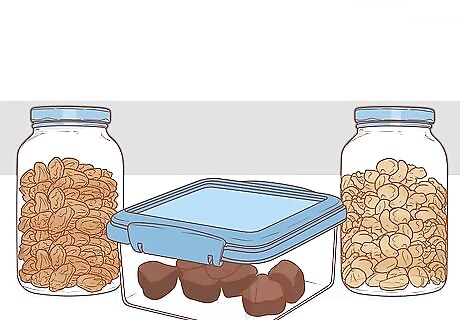
Keep harmful food out of your guinea pig’s reach. While some fruits and vegetables are good for your guinea pig’s diet, other common foods like raisins, nuts, and chocolate are harmful and can make them sick. Store these foods in a glass jar or plastic container, or put them in a secure cupboard or pantry.
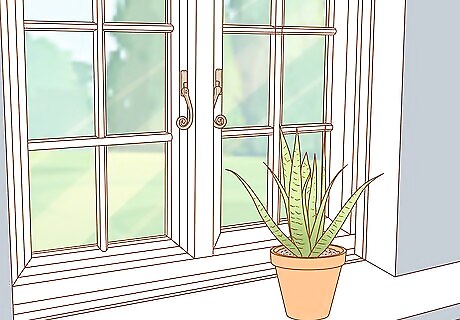
Hang or move houseplants to a safe spot. Some houseplants are poisonous to pets. If you have houseplants in areas where guinea pigs may roam, like living room tables or windowsills, consider hanging the plants from the ceiling or moving them to a high shelf out of your guinea pig's reach. If you hang plants or flowers in a basket from the ceiling, your guinea pig can’t get sick by chewing on them.
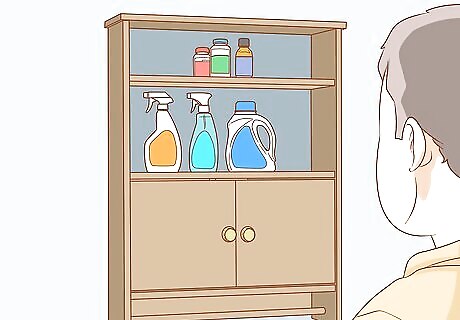
Store cleaning supplies or bathroom products in a secure place. Keep common household supplies and toiletries like cleaning sprays, detergents, medications, hair products, and beauty products out of reach of guinea pigs. You can store them in a secure cupboard or on a high shelf.
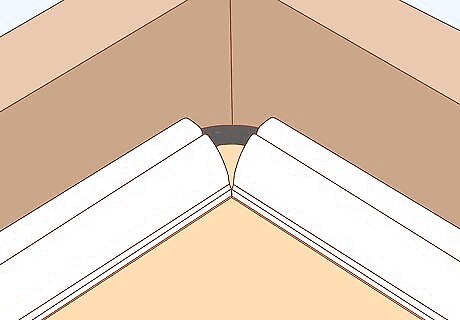
Hide or cover electrical cords so your guinea pig doesn’t get shocked. An easy way to do this is to run cords under rugs or behind furniture so your guinea pig can’t get to them. You can also use electrical cord covers found in hardware stores or home supply stores. You can also keep electrical cords from becoming a hazard by winding up excess cord lengths, running cables through walls, or lifting them out of your guinea pig’s reach.
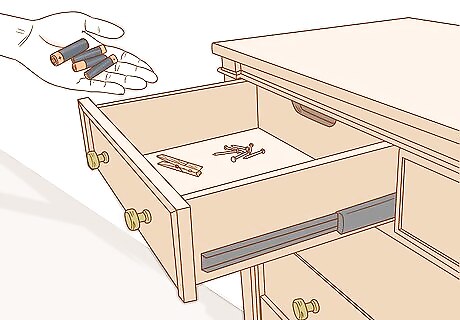
Remove small and sharp objects to prevent injury to your guinea pig. Clothespins, nails, tacks, and batteries are common small objects you might find around your house. Make sure these are put away in drawers or storage containers so your guinea pig doesn’t hurt itself by touching or eating them.
Keeping Your Belongings Safe
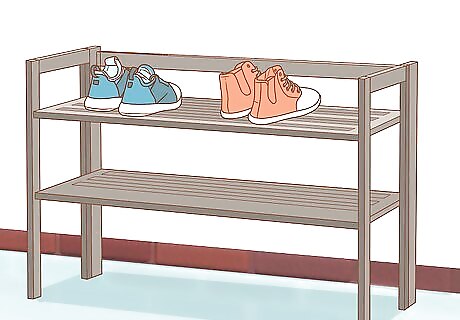
Remove items your guinea pig might chew from the floor. Store shoes on a shoe rack or in closets, so your guinea pig can’t chew on the laces. Make sure children’s toys are stowed on shelves or in containers.
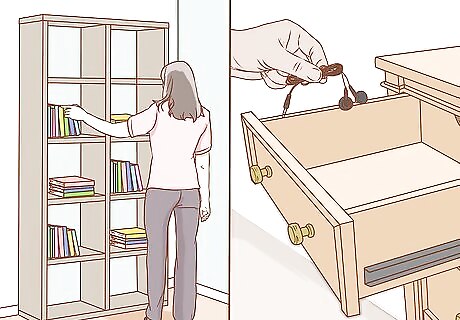
Put away delicate and valuable items. Store delicate or valuable items your guinea pig can chew on like paper money, jewelry, books, or small electronics like earbuds. If you have pillows or throw blankets that have tassels, beads, or sequins, remove them from your guinea pig’s play area. Stow these smaller items in boxes or containers with lids, so your guinea pig can’t get to them.
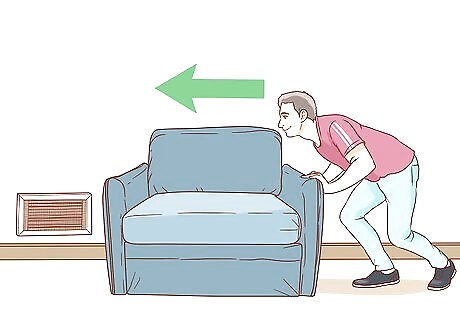
Cover or block access to hiding spaces. Hiding spaces might include small holes in a wall or cupboard, floor or wall vents, spaces between furniture and walls, or spaces underneath appliances and furniture. For example, store boxes and containers under a couch or bed to prevent your guinea pig from hiding there. Get down on the floor and look for areas your guinea pig could squeeze into, as well as hazards they might come across. Remember, the world looks very different from a tiny piggy than it does to you, so try to see the world from your pet's perspective. If your guinea pig is exploring a room during floor time, temporarily block floor or wall vents by moving furniture on top of or in front of them. You can close small gaps in walls by blocking it with a piece of cardboard.
Letting Your Guinea Pig Explore
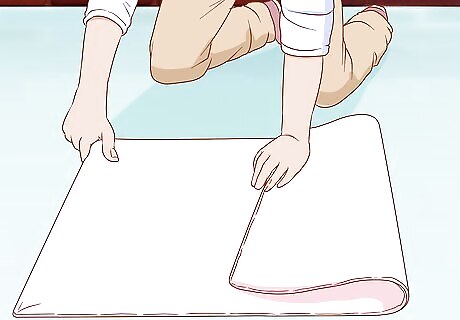
Prepare a clean, padded floor for your guinea pig’s play area. Once your floor is cleared of any risky objects, you can lay down padding for your guinea pig to play on. Bath mats, old blankets, and towels, or the newspaper can protect your floor and provide a comfortable play area for your guinea pig. With tile or linoleum, put down anti-slip mats first to prevent your blankets or towels from shifting around.
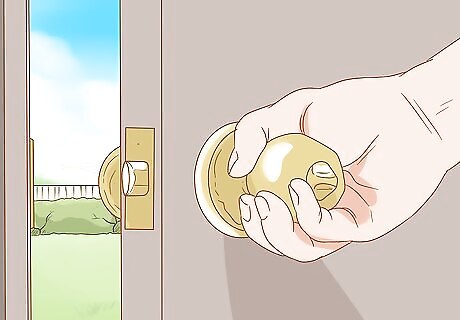
Close doors to other rooms to let your guinea pig explore safely. If your guinea pig is exploring a bedroom or office, close the door to this room. This will prevent your guinea pig from getting stepped on, running into other house pets, or chewing on objects that are off-limits in the rest of your home.
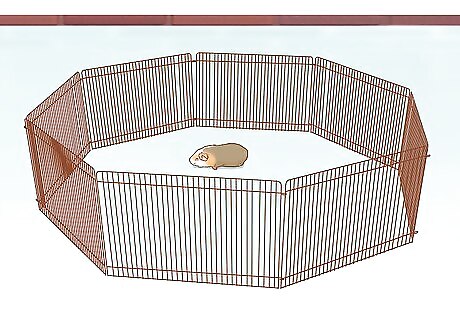
Set up a pen in a common area if it doesn’t have a designated room. A short, foldable wire fence often sold in pet stores can be used to set up a safe play space for your guinea pig. It can be used indoors in any guinea pig-proofed room, or outdoors to give your guinea pig fresh air and grass to explore. Make sure all other pets are locked out of the room before you allow your guinea pig out. This will help keep your piggy safe. Giving your guinea pig supervised “floor time” out of its cage will help keep it happy and healthy.
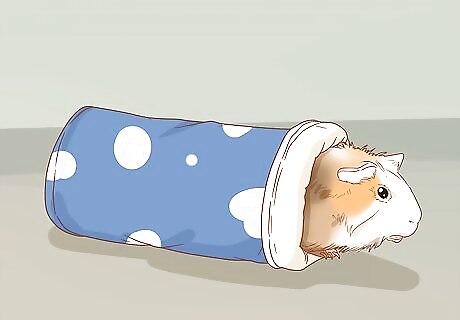
Keep your guinea pig mentally stimulated and happy with toys. By giving your guinea pig its toys and playing with it often, your guinea pig is less likely to be drawn to household items that should not be chewed. Examples of toys include small chew toys made from hay or sticks, tunnels, or miniature tents. Hay or stick toys will let them chew on safe objects. Tunnels and miniature tents let them hide, which they love to do.



















Comments
0 comment